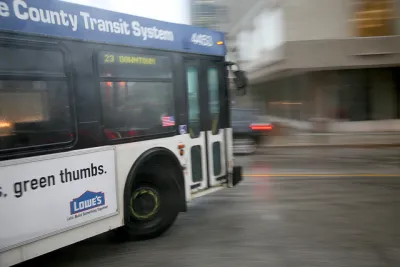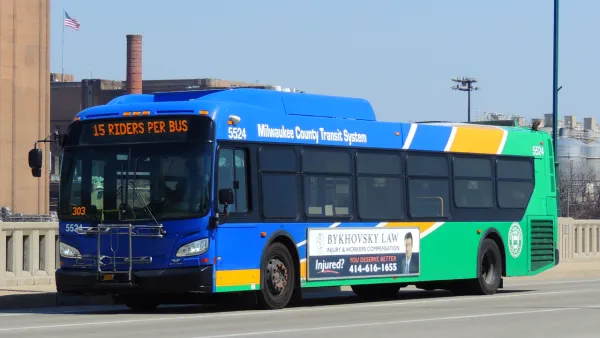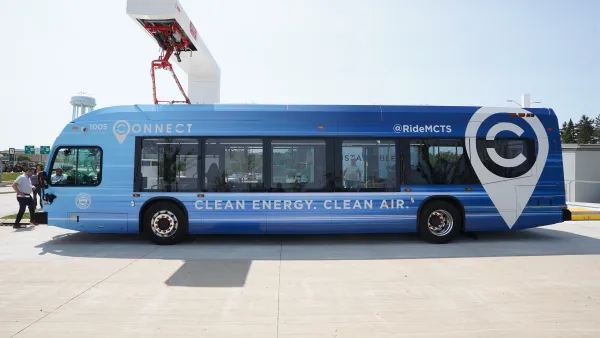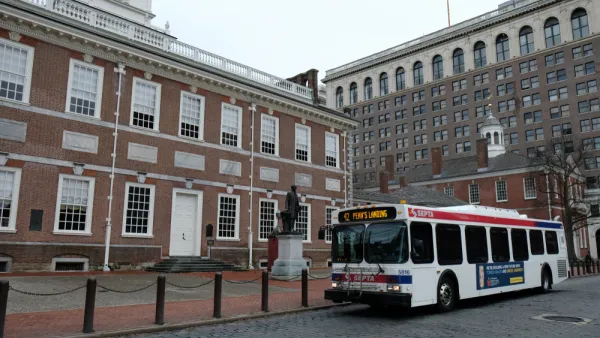The agency is pressing ahead with the redesign of its bus system, which has led to a 15 percent increase in ridership since its launch, but ridership remains well below pre-pandemic levels.

Madeline Fox of Wisconsin Public Radio reports on the state of Wisconsin’s transit agencies, which, like others around the country, continue to struggle to adapt to the dramatic changes in ridership and travel patterns that occured over the last two years.
Despite budget deficits—“The Milwaukee County Transit System is expecting a $32.8 million budget deficit by 2025”—the agency is moving forward with its redesign plans. “The county transit system is nearly a year into its MCTS Next redesign, which includes making 60 percent of buses arrive at least every 15 minutes during service hours, up from 40 percent. The system removed some stops that were close together, shortening some routes while extending others.”
Today, the agency is seeing roughly 60 percent of pre-pandemic ridership. “Winter said Milwaukee is continuing to tweak its routes in response to rider and driver feedback — it's made sure all the bus drivers' routes have bathrooms they can access, for example.”
FULL STORY: Wisconsin transportation agencies make their case for public transit as pandemic, budget woes loom

National Parks Layoffs Will Cause Communities to Lose Billions
Thousands of essential park workers were laid off this week, just before the busy spring break season.

Retro-silient?: America’s First “Eco-burb,” The Woodlands Turns 50
A master-planned community north of Houston offers lessons on green infrastructure and resilient design, but falls short of its founder’s lofty affordability and walkability goals.

Delivering for America Plan Will Downgrade Mail Service in at Least 49.5 Percent of Zip Codes
Republican and Democrat lawmakers criticize the plan for its disproportionate negative impact on rural communities.

Test News Post 1
This is a summary

Test News Headline 46
Test for the image on the front page.

Balancing Bombs and Butterflies: How the National Guard Protects a Rare Species
The National Guard at Fort Indiantown Gap uses GIS technology and land management strategies to balance military training with conservation efforts, ensuring the survival of the rare eastern regal fritillary butterfly.
Urban Design for Planners 1: Software Tools
This six-course series explores essential urban design concepts using open source software and equips planners with the tools they need to participate fully in the urban design process.
Planning for Universal Design
Learn the tools for implementing Universal Design in planning regulations.
EMC Planning Group, Inc.
Planetizen
Planetizen
Mpact (formerly Rail~Volution)
Great Falls Development Authority, Inc.
HUDs Office of Policy Development and Research
NYU Wagner Graduate School of Public Service





























